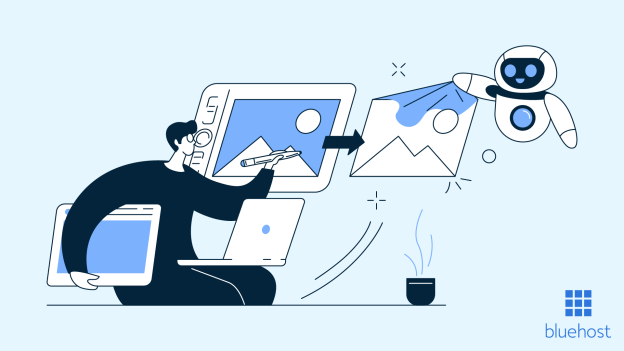So, you’re probably wondering if AI is going to kick graphic designers to the curb, right? Well, the world of design is definitely evolving, and artificial intelligence is making its mark. From generating logos to designing websites, AI is starting to show off its creative side. But does this mean it will replace human graphic designers altogether? Let’s take a closer look at the relationship between AI and graphic design to see if there’s room for collaboration or if it’s time to dust off the resume.
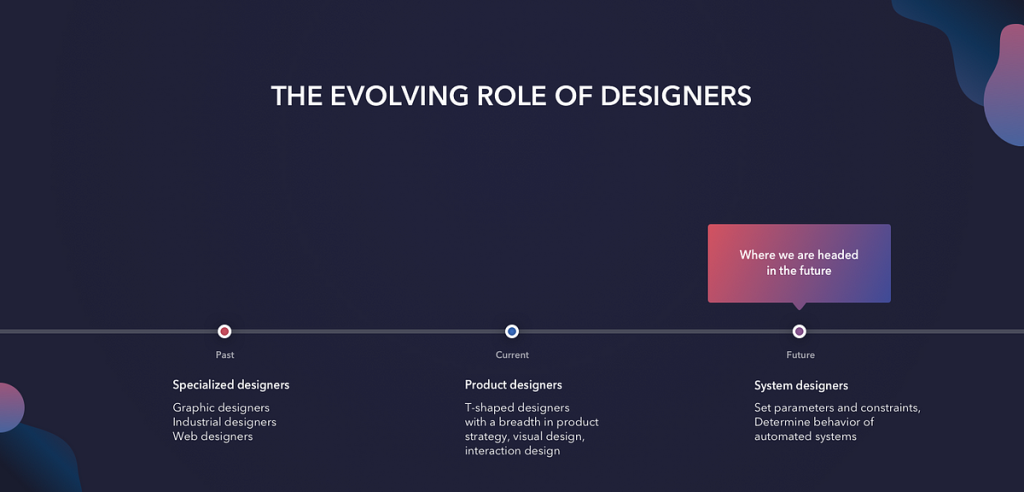
This image is property of miro.medium.com.
Benefits of AI in Graphic Design
Artificial Intelligence (AI) has become an inseparable part of many industries, and graphic design is no exception. The integration of AI in graphic design brings forth several benefits that revolutionize the industry. From automation of repetitive tasks to enhanced creativity and productivity, AI has the potential to reshape the way designers work and the quality of their output. Additionally, AI helps improve accuracy and precision, allowing designers to create visually stunning and flawless designs.
Automation of repetitive tasks
One of the most significant advantages of AI in graphic design is its ability to automate repetitive and time-consuming tasks. Designers often find themselves spending countless hours on tasks like resizing images, optimizing file formats, or removing backgrounds. However, with the power of AI, these laborious tasks can be automated, freeing up valuable time and energy for designers to focus on more creative and strategic aspects of their work. By automating these repetitive tasks, AI streamlines the design process and increases efficiency.
Enhanced creativity and productivity
Contrary to popular belief, AI does not stifle creativity; instead, it enhances it. AI-powered software and tools can provide designers with new perspectives, fresh ideas, and inspiration. By analyzing vast amounts of design data and patterns, AI can suggest alternative color palettes, typography choices, or layout options, sparking new creativity in designers. Moreover, AI can generate design options based on specific design briefs or client preferences, acting as a valuable collaborator for designers and helping them explore different possibilities within a shorter timeframe.
Improved accuracy and precision
Designers strive for perfection and precise execution of their ideas. However, human error is inevitable, leading to inaccuracies and imperfections in the final design. AI can play a crucial role in improving the accuracy and precision of graphic design by eliminating or minimizing such errors. AI algorithms can analyze designs and identify potential flaws, inconsistencies, or alignment issues that may go unnoticed by human eyes. This results in designs that are visually coherent, pixel-perfect, and meet industry standards. With AI as a guiding tool, designers can rely on its advanced algorithms to enhance the accuracy and precision of their work.
Current Role of AI in Graphic Design
Over the years, AI has made significant contributions to the field of graphic design. Its current role is seen in various aspects of the design process, aiding designers in creating impactful visual communications.
Automated image editing
Image editing is an essential part of graphic design, and AI has emerged as a game-changer in this area. AI-powered image editing tools can automatically retouch and enhance photographs, remove imperfections, adjust colors, and even generate stunning visual effects. These tools utilize machine learning algorithms to analyze and understand the content of an image, enabling designers to achieve professional-level edits quickly. By automating image editing, AI saves designers time and effort while achieving high-quality results.
Template-based design tools
Another area where AI has made its mark in graphic design is through template-based design tools. These tools leverage AI to provide designers with pre-designed templates, layouts, and design elements that can be customized to suit specific needs. With AI’s ability to analyze design trends and user preferences, these tools can suggest design options that are visually appealing and aligned with current design standards. This not only accelerates the design process but also ensures consistency and coherence across various design projects.
Data-driven design decisions
Data plays a vital role in modern businesses, and AI enables designers to leverage data-driven insights to make informed design decisions. With AI algorithms, designers can analyze large datasets, customer behavior patterns, or market trends to gather valuable insights. These insights can then be used to create designs that resonate with target audiences and achieve the desired goals. By incorporating data-driven design decisions, AI empowers designers to create designs that are tailored, effective, and relevant in today’s data-driven world.
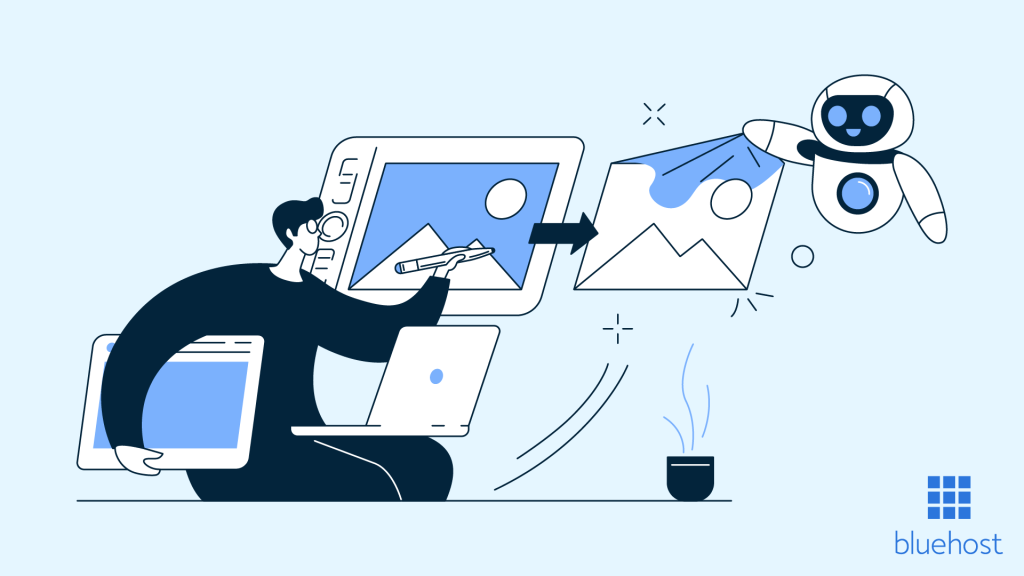
This image is property of mlx3lspc9ed5.i.optimole.com.
Limitations of AI in Graphic Design
While AI offers numerous benefits to the field of graphic design, it is crucial to acknowledge its limitations. AI, despite its potential, still falls short in certain aspects that require human expertise and creativity.
Lack of human touch and emotional appeal
One of the significant limitations of AI in graphic design is its inability to replicate the human touch and emotional appeal that designers bring to their work. While AI can automate tasks and generate designs based on predefined patterns, it often lacks the intuition and emotional understanding that humans possess. Design is an art form that relies on capturing emotions, storytelling, and connecting with individuals on a deeper level. These aspects are difficult for AI to emulate fully, making the human touch an irreplaceable element in graphic design.
Inability to fully replicate creative thinking
Creative thinking is the cornerstone of graphic design. It is the ability to ideate, innovate, and translate concepts into visually compelling designs. While AI can assist designers in generating design options, it cannot fully replicate the creative thinking process that human designers excel at. AI relies on preexisting data and patterns, which limits its ability to imagine or conceptualize entirely new and groundbreaking designs. The human mind, on the other hand, is capable of abstract thinking, imagination, and pushing the boundaries of traditional design. The spark of creativity that designers bring is an essential element that AI cannot entirely replace.
Limited ability to understand abstract concepts
Graphic design often involves the communication of abstract ideas and concepts that go beyond visual aesthetics. AI, being data-driven and algorithmic, struggles in understanding and interpreting these abstract concepts. Designers have the innate ability to grasp complex ideas, distill them into visual representations, and communicate them effectively. While AI can assist in analyzing and organizing large amounts of data, it falls short in comprehending the nuanced meanings and emotions associated with abstract concepts. Therefore, the interpretation and representation of such concepts remain firmly in the hands of human designers.
The Coexistence of AI and Graphic Designers
Rather than being seen as adversaries, AI and graphic designers can form a symbiotic relationship, each complementing the other’s strengths and compensating for their limitations. The coexistence of AI and graphic designers opens up a world of possibilities and collaboration.
Complementary roles
AI can take on the role of a supportive assistant, handling repetitive and time-consuming tasks that designers often find themselves immersed in. This allows designers to focus on high-level thinking, conceptualization, and bringing their creative ideas to life. By delegating mundane tasks to AI, designers can allocate their time and energy to more value-adding aspects of the design process. The complementary roles of AI and graphic designers create a harmony that yields superior results.
Collaborative opportunities
AI and graphic designers can come together in a collaborative process, leveraging their respective strengths to create exceptional design solutions. Designers can use AI-powered tools to explore design variations, seek inspiration, and gain unique insights. AI can analyze vast amounts of design data and suggest design directions, allowing designers to iterate and refine their ideas effectively. Through collaboration, AI and graphic designers can enhance their creative capabilities and produce designs that are a fusion of human intuition and technological prowess.
Evolution of the graphic design profession
The integration of AI in graphic design marks the evolution of the profession. Graphic designers are no longer limited to traditional design methods but can utilize AI as a tool to push the boundaries of creativity and innovation. The role of graphic designers has shifted from being solely creators to a combination of creators and curators, utilizing AI to optimize and streamline their work. This evolution opens up new career opportunities and paves the way for designers to become strategic thinkers, problem solvers, and visual communicators in a technology-driven landscape.
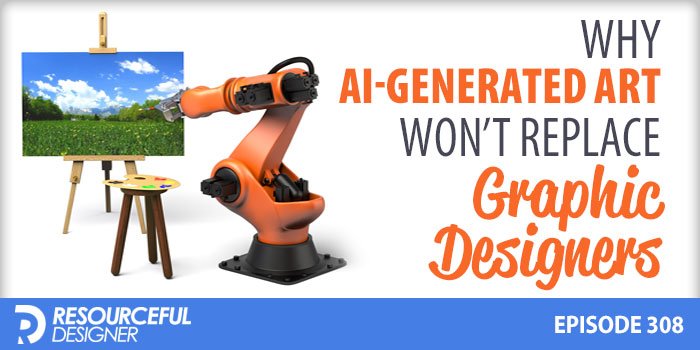
This image is property of www.resourcefuldesigner.com.
AI as a Tool, Not a Replacement
It is essential to understand that AI is not intended to replace graphic designers; rather, it is a tool that empowers them and expands the possibilities within the field. AI augments designer capabilities, expands their skill set, and enables them to create impactful designs more efficiently.
Augmenting designer capabilities
AI acts as a powerful tool that extends the capabilities of graphic designers. By automating repetitive tasks, generating design options, and providing data-driven insights, AI allows designers to focus on the aspects that require human ingenuity. It frees up time, boosts productivity, and amplifies the designer’s creative potential. With AI as a support system, designers can more effectively execute their ideas, explore new design territories, and elevate the quality of their work.
Empowering designers with new possibilities
AI empowers designers by giving them access to advanced tools and technologies that were previously inaccessible. From AI-powered design software to machine learning algorithms, designers can utilize these resources to push boundaries and explore uncharted design territories. AI can generate design options that designers may not have thought of, inspire new creative directions, and offer insights that expand the designer’s perspective. By embracing AI as a tool, designers can embrace a world of new possibilities and foster innovation in their work.
Expanding the scope of graphic design
With AI’s assistance, the scope of graphic design expands beyond traditional boundaries. AI-powered technologies enable designers to create interactive designs, immersive experiences, and personalized visual communications. Designers can leverage AI’s capabilities to design for emerging technologies such as virtual reality, augmented reality, and mixed reality. The integration of AI allows designers to venture into new frontiers, blur the lines between design disciplines, and embrace a multidimensional approach to graphic design. AI expands the possibilities and potential impact of graphic design in a technology-driven society.
Adapting and Upskilling in the Age of AI
As AI continues to influence the graphic design industry, designers must adapt and upskill to stay relevant and harness the full potential of AI-assisted design.
Developing expertise in AI-assisted design
To thrive in an AI-centric design landscape, designers must develop expertise in AI-assisted design tools and technologies. Acquiring knowledge of AI algorithms, machine learning principles, and data analytics equips designers to effectively utilize AI-powered tools. By understanding how AI works, designers can leverage its capabilities in their design process and maximize the benefits it brings. Developing expertise in AI-assisted design is an investment in the future of the design profession, ensuring designers stay at the forefront of technological advancements.
Embracing new design technologies and tools
Alongside AI, various other design technologies and tools continue to evolve. Designers must embrace these technologies and continually update their skill sets to adapt to the changing landscape. Whether it is learning new design software, exploring emerging design trends, or experimenting with novel platforms, designers need to be open to innovation. By embracing new design technologies and tools, designers can efficiently collaborate with AI, leverage its potential, and produce designs that resonate with contemporary audiences.
Continuous learning and growth
In an era driven by AI and evolving design practices, continuous learning and growth are crucial for designers. Designers must stay updated with the latest advancements, design theories, and industry trends. Engaging in professional development activities such as attending workshops, webinars, or design conferences allows designers to hone their skills, broaden their knowledge, and network with industry professionals. By embracing a mindset of continuous learning and growth, designers can adapt to the changing demands of the industry and seize new opportunities as they arise.
This image is property of qph.cf2.quoracdn.net.
Ethical Considerations and Responsibilities
As AI becomes deeply ingrained in graphic design, ethical considerations and responsibilities come to the forefront. Designers must be mindful of the implications and consequences of using AI in their work to ensure ethical practices and preserve human creativity and originality.
Ethical implications of AI-generated content
With AI’s ability to generate content, there arises a concern of potential misuse or unethical practices. Designers should be cautious when utilizing AI-generated content and ensure that it aligns with ethical standards. AI-generated content should not infringe upon copyright laws, intellectual property rights, or misrepresent the work of others. Designers bear the responsibility of verifying the authenticity and originality of AI-generated content, maintaining integrity and upholding ethical design practices.
Preserving human creativity and originality
While AI can assist in generating design options, it is crucial to preserve and celebrate human creativity and originality. Designers must not solely rely on AI to create designs but should infuse their personal touch, artistic vision, and unique style into their work. The human element in graphic design encompasses emotions, intuition, and innovative thinking, which cannot be replicated by AI alone. By embracing their individuality and uniqueness, designers ensure that the essence of human creativity remains at the core of their designs.
Establishing design ethics in AI implementation
As AI technology continues to advance, it is essential to establish design ethics specific to AI implementation. Designers should advocate for responsible AI practices, ensuring transparency, accountability, and fairness in the design process. Ethical considerations should be taken into account while utilizing AI-generated templates, avoiding perpetuation of biases, or unintentional harm through AI-powered design decisions. By advocating for design ethics in AI implementation, designers contribute to a responsible and sustainable future for graphic design.
Future Prospects for Graphic Designers
The future holds abundant opportunities for graphic designers as the integration of AI continues to shape the industry. Designers who adapt and embrace AI will be positioned to thrive and explore new frontiers.
Shifting focus towards strategic thinking
As AI takes over repetitive tasks and enhances efficiency, graphic designers can shift their focus towards strategic thinking. They can become visual problem solvers, strategic consultants, and design thinkers who understand the broader goals and context of their clients’ businesses. By combining their creativity with strategic insights, designers can create designs that not only convey messages but also drive results and fulfill business objectives. The future of graphic design lies in the ability of designers to think strategically and provide holistic design solutions.
Exploring new design frontiers
AI opens up new design frontiers that were previously unexplored. Designers can venture into designing for emerging technologies, such as designing user interfaces for virtual reality experiences or creating interactive designs for augmented reality applications. The integration of AI and other emerging technologies allows designers to push the boundaries of traditional design and create immersive, engaging, and innovative visual experiences. By embracing new design frontiers, designers can adapt to the evolving needs of the digital age and create designs that captivate and inspire.
Leveraging AI for innovative design solutions
The future of graphic design lies in leveraging AI as a catalyst for innovation. Designers can harness the power of AI to streamline workflows, gather valuable insights, and generate design options that push the boundaries of conventional design. By combining AI with their human intuition, creativity, and expertise, designers can create innovative design solutions that captivate audiences and address complex design challenges. The collaboration between AI and designers has the potential to drive innovation and transform the graphic design landscape.
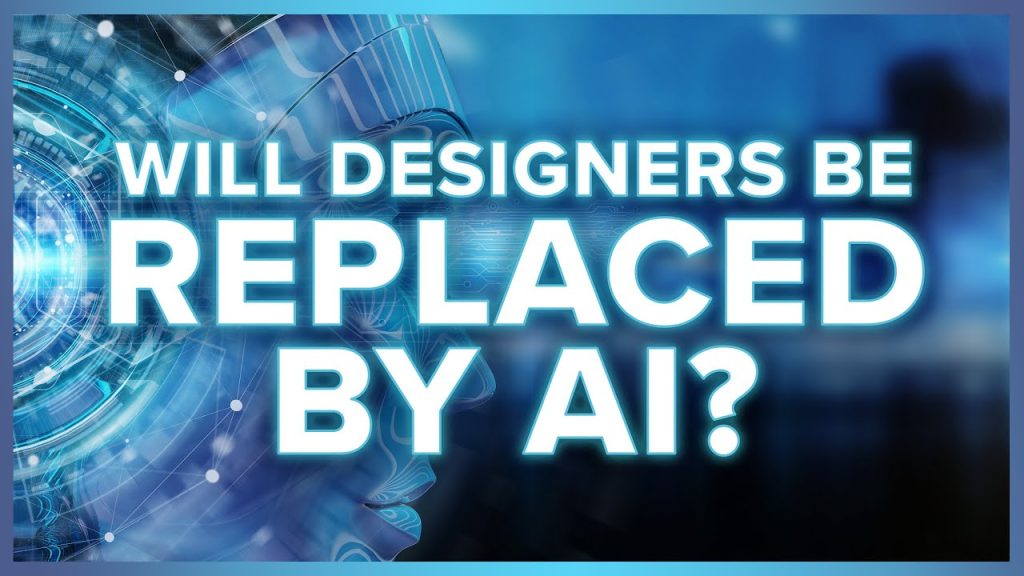
This image is property of i.ytimg.com.
The Human Advantage in Graphic Design
Amidst the rise of AI in graphic design, designers possess a unique advantage that sets them apart from machines. The human element brings qualities that are irreplaceable and invaluable.
Emotional intelligence and empathy
Graphic designers excel in understanding and evoking emotions through their designs. They possess emotional intelligence and empathy, enabling them to design visuals that resonate with people’s feelings and experiences. This human touch in design fosters connections, builds trust, and creates meaningful experiences for audiences. While AI can analyze data and patterns, it lacks the ability to comprehend the emotional nuances that designers can capture. The human advantage of emotional intelligence and empathy gives designers an edge in creating designs that truly engage and inspire.
Interpreting and conveying complex messages
Graphic design often involves communicating complex messages and concepts visually. Designers possess the ability to interpret and convey these messages effectively through their designs. They understand how to distill complex ideas into visually appealing and easily understandable visuals. While AI can generate visually pleasing designs, it struggles to grasp the complexity and depth of nuanced messages. Designers, with their creativity and critical thinking, excel at deciphering intricate concepts and translating them into compelling visuals. The human advantage of interpretation and conveying complex messages ensures that graphic design remains impactful and captivating.
Adapting to evolving client needs
Design is an iterative process that involves collaboration and understanding clients’ needs. Designers excel in adapting to evolving client requirements and accommodating their preferences. They understand the importance of human interaction, the power of listening, and the ability to adapt designs based on client feedback. This flexibility and adaptability are unique human traits that machines cannot replicate. Designers, with their interpersonal skills and ability to build relationships, can deliver designs that align with clients’ evolving needs. The human advantage of adaptation ensures that graphic design remains client-centric and tailored to individual requirements.
Conclusion
The integration of AI in graphic design brings forth a wide array of benefits, from automating repetitive tasks to enhancing creativity and productivity. While AI has its limitations, it is not intended to replace graphic designers but rather to empower them and expand the possibilities within the field. AI and graphic designers can coexist, with AI acting as a supportive tool that complements designers’ skills and amplifies their creative potential. Designers can adapt and upskill to embrace AI-assisted design, continuously learn and grow, and maintain ethical considerations in their work. The future prospects for graphic designers are promising, with opportunities to shift focus towards strategic thinking, explore new design frontiers, and leverage AI for innovative design solutions. The human advantage in graphic design, including emotional intelligence, interpretation of complex messages, and adaptability, ensures that designers remain instrumental in creating impactful and visually compelling designs. As AI and graphic designers collaborate, the possibilities for the future of graphic design are limitless.
